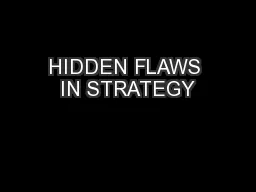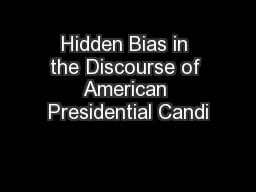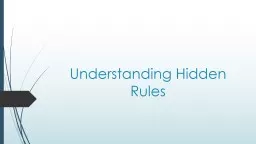PPT-HIDDEN FLAWS IN STRATEGY
Author : alida-meadow | Published Date : 2016-12-12
PRESENTED AT CENTRAL INDIANA RESOURCE FAIR July 17 2012 John T Thompson Thompson DistributionFirst Electric Supply Source McKinsey amp Co STRATEGY BASICS GROWTH
Presentation Embed Code
Download Presentation
Download Presentation The PPT/PDF document "HIDDEN FLAWS IN STRATEGY" is the property of its rightful owner. Permission is granted to download and print the materials on this website for personal, non-commercial use only, and to display it on your personal computer provided you do not modify the materials and that you retain all copyright notices contained in the materials. By downloading content from our website, you accept the terms of this agreement.
HIDDEN FLAWS IN STRATEGY: Transcript
Download Rules Of Document
"HIDDEN FLAWS IN STRATEGY"The content belongs to its owner. You may download and print it for personal use, without modification, and keep all copyright notices. By downloading, you agree to these terms.
Related Documents













![[PDF]-Art of Software Security Testing, The: Identifying Software Security Flaws: Identifying](https://thumbs.docslides.com/981938/pdf-art-of-software-security-testing-the-identifying-software-security-flaws-identifying-software-security-flaws.jpg)
